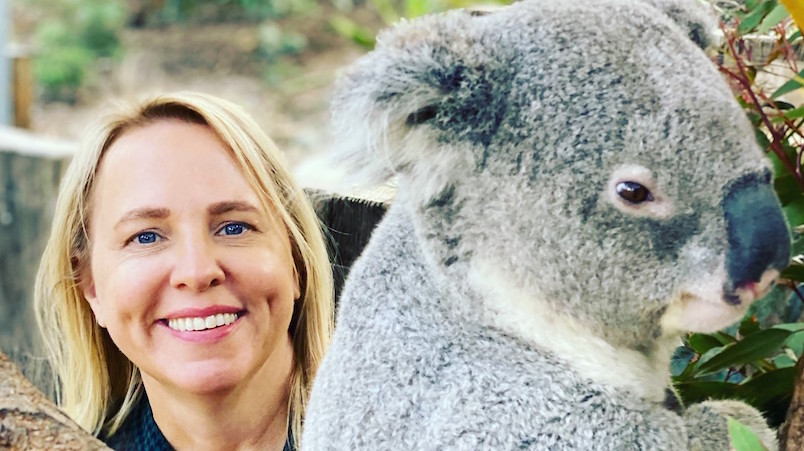Animal attraction: How Taronga Zoo built a paid streaming service, ditched YouTube to launch first party data masterplan; targets exceeded sevenfold

Outgoing Taronga CMO Karen Madden: "there were some massive internal hurdles ... but we exceeded our targets seven fold."
Taronga Zoo CMO Karen Madden exits this week to head up marketing at the ABC. But she leaves the zoo with a first party data play that is bringing in cash at bargain basement acquisition rates while driving huge engagement gains. The trick, she told Mi3, was ditching YouTube for a video player that didn't want to keep first party data all to itself.
What you need to know:
- Taronga Zoo saw revenues crippled by Covid lockdowns. But CMO Karen Madden used the downtime to reassess its first party data strategy – and bring in some cash.
- The zoo launched Taronga TV – a donation-based platform featuring footage from its animal enclosures, with the birth of five lion club’s the star attraction.
- But Madden quickly realised YouTube was not an option – because the platform would keep first party data Taronga badly needed.
- The results have been huge, driving massive engagement and acquisition – with donations averaging $14 – at bargain basement prices (less than $2 CPAs).
We reached out to YouTube and very quickly realised it wasn’t the right platform for us as we didn’t want to sign up to an ongoing strategy – and we needed the first party data.
Karen Madden leaves Taronga Zoo this week to become head of marketing at the ABC. But she exits having grown Taronga TV into a revenue-generating first party data platform that is also keeping customers engaged – without ceding its data to the big platforms.
She told Mi3 that while Taronga is fleshing out its first party data strategy, the journey has not always been easy.
“As a business, we have a lot of data, but we tended to silo it … we haven’t always had a cohesive single view of the customer – which has limited us,” said Madden. “We have assumed a lot of things about our guests and supporters.”
The marketing team is working to change that, using recent lockdowns to review its data marketing strategy – and start experimenting.
While Covid presented huge challenges – “in it’s 105 year history, the zoo has only been closed twice, both due to Covid,” – and leaving it short of the 40 per cent of revenues that come from overseas tourists, it also presented opportunity. The zoo has generated tens of thousands of dollars in revenue from its animal cams via Taronga TV, while adding new first party data, customers and driving major engagement gains.
Launched during the first 2020 lockdowns, Taronga TV – showing live cams on animal enclosures, keeper talks and behind the scenes video – was scaled back when the zoo reopened in June 2020. But it provided the test-bed for phase two.
“Cue Delta, and once again we were facing into another lockdown. I decided to double down on TTV and we upgraded and relaunched our live cams, and put a renewed focus on creating content,” said Madden.
“Our education and digital marketing teams quickly launched ‘Lockdown Lessons’ – free half hour lessons aired twice a week.” These were a “huge success”, says Madden, racking up 260,000 live-streams and bringing more schools into its funnel, “with around 70 per cent growth of our teacher database”, Madden adds.
Ditching YouTube for data
With admissions income turned off, the birth of five lion cubs presented an opportunity to test how to monetise the platform, with Taronga seeking $7 upwards for time-limited access to the streams.
“There were some massive internal hurdles. The carnivore keeping team needed to be on board and comfortable it would not adversely impact the animals, and that we had control over what footage was aired,” says Madden. “The marketing team were cautious about asking people to pay for our content; there was a fear that we would get our loyal Zoo Friends members offside by asking them to pay when they hadn’t been able to access the zoo for months.”
So Taronga opted for a donation-based campaign – making it tax-deductible. But that meant the zoo needed people’s data to send a tax-deductible receipt – and the big video platforms don’t share data.
“Via our media agency, we reached out to YouTube and very quickly realised it wasn’t the right platform for us as we didn’t want to sign up to an ongoing strategy – and we needed the first party data,” says Madden. So she opted for InPlayer, which provided a paywall and meant Taronga could host the video on its own site, facilitate tax receipts – and keep its first party data.
Roaring success
The Cub Cam results “exceeded our internal targets seven-fold,” says Madden. “The average donation rate was double the $7 entry-level amount and 79 per cent of those who signed up were first time donors. It had an 88 per cent conversion rate and the total cost of fundraising was $7k, with cost per acquisition under $2 – which is exceptional in the world of fundraising.”
The Zoo is now turning its attention to greater efficiency within media spend, using media mix modelling via Mutiny's WarChest platform to work out which channels are driving business results and how to make more money from Taronga TV. It’s also working to refine its data management and marketing stack to make best use of first party data ahead of cookie depreciation.
Meanwhile, Madden is off to the ABC, a different beast altogether.
